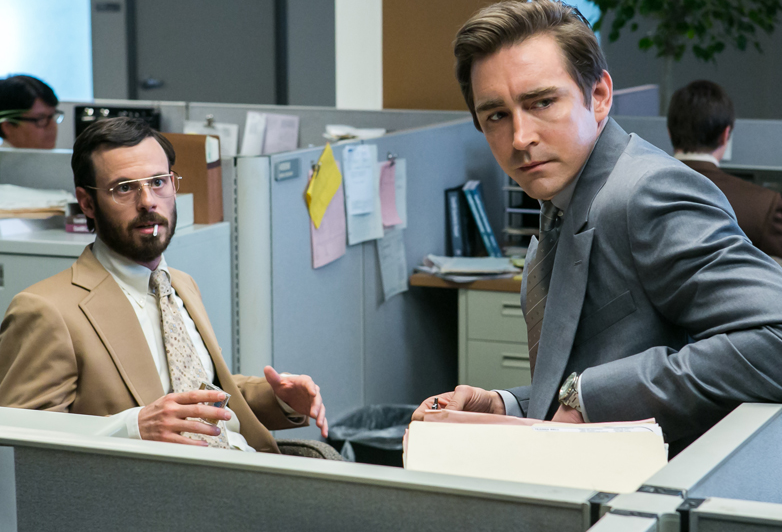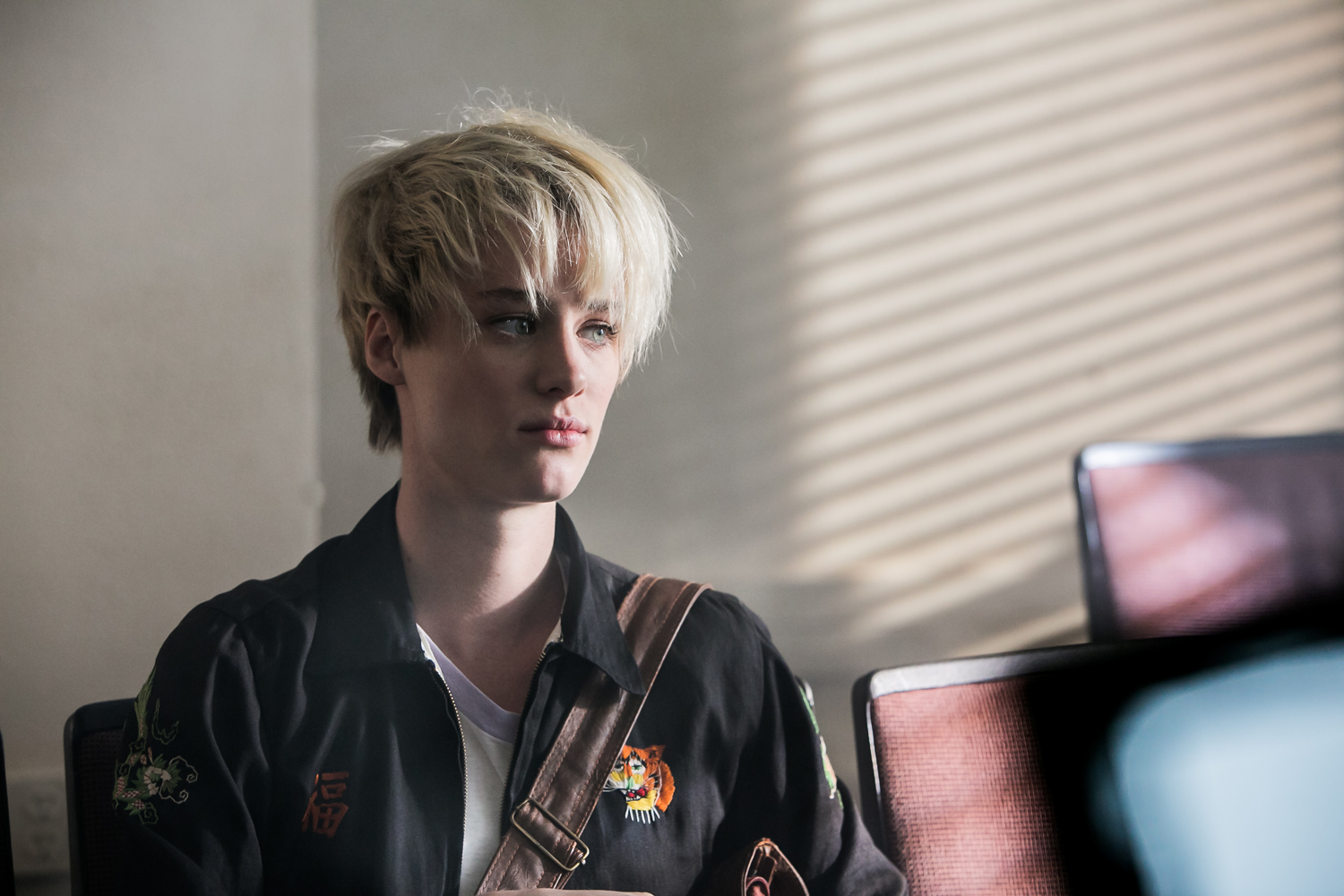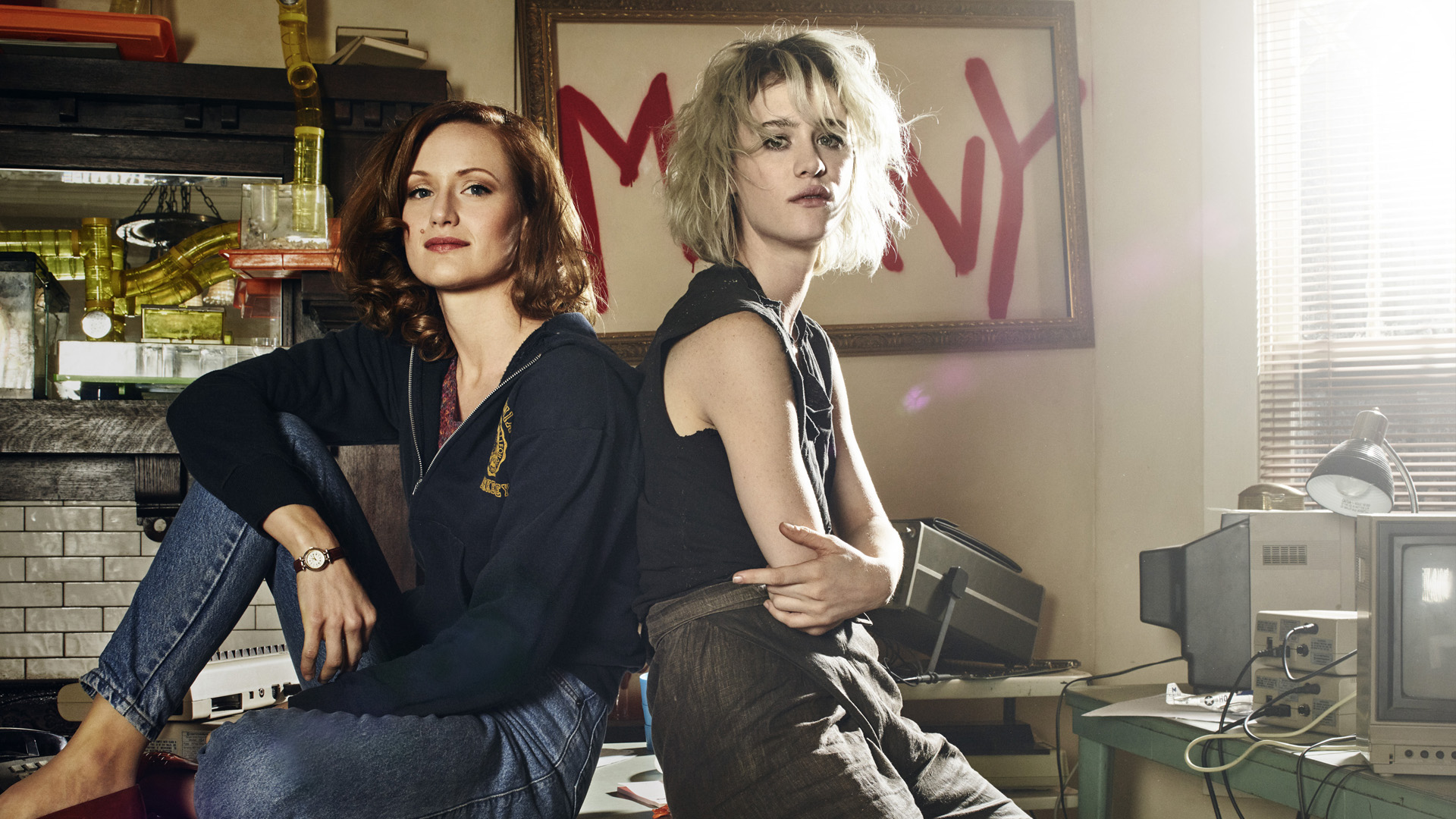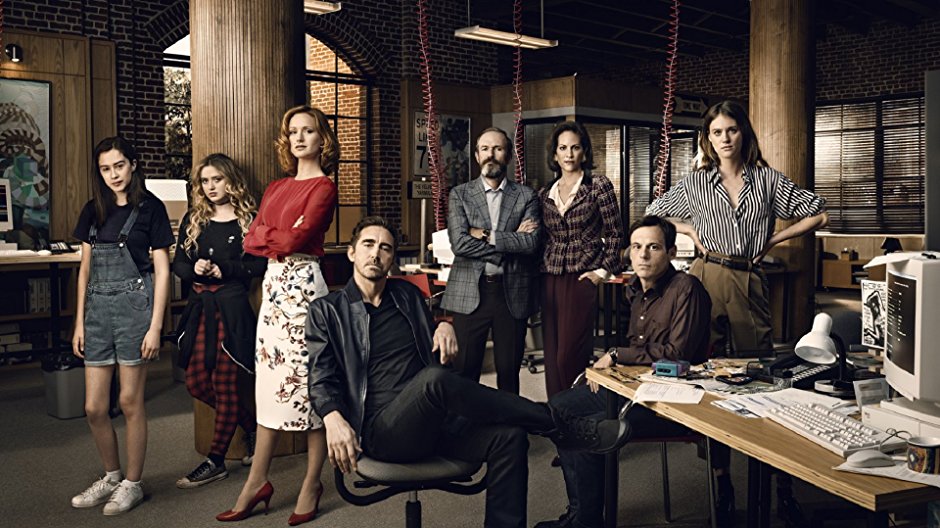
“Halt and Catch Fire” Is The Best TV Show You’re Not Watching (Yet)
I can’t find your sweet sweet tweet anymore, dear mysterious stranger on twitter who asked me a month ago if we’d be covering the lesbian storyline on Halt and Catch Fire, but if you’re still out there and you’re reading this — thank you.
Friends, it’s not often that I offer heartfelt gratitude to a human who tipped me off to a lesbian “storyline” that did not appear until midway through the fourth f*cking season of a television show and, when it happened, was perhaps the very definition of “low-key.” Furthermore, I’ve had to watch Season Four on Xfinity OnDemand, which means I’ve seen the same commercial for Climb Cart, a gadget that helps you haul bags upstairs instead of carrying them, at least 200 times, which is enough to make me want to throw everything I’ve ever owned down a flight of stairs.
But Halt and Catch Fire is so f*cking good. I didn’t even need lesbians! Because instead I had powerful women in tech, and sweet sweet ’80s and ’90s nostalgia and damn fine writing and stories that bounce in unexpected directions, driven by big concepts that rarely get such a compelling dramatic treatment on contemporary television.
Halt and Catch Fire traces the rise of personal computing and the internet from 1983 to 1994 through the stories of four characters who intersect and break apart through ventures small and large, starting out in Texas and eventually ending up in, of course, Silicon Valley. It’s loosely based on all kinds of true stories which means it’s constantly tapping right into the world I was tapped closely into growing up ’cause — surprise! — I’ve been glued to a computer screen since I was approximately 6 years old; playing games, writing novels, finding community. I have deep affection for computer games that require switching out floppy disks every ten minutes. Halt and Catch Fire is about ideas, about a team of wicked smart humans who turn hazy visions of a connected future into a tightly coded reality, knowing always that somebody else out there might be riding the same melt and could beat them to beta. It’s about the thought experiments behind the big-deal ideas we now take for granted, from the internet itself to online retail, search engines, layman-accessible chat rooms, internet security and web directories. And OH, the nostalgia, my friends! The intense, pitch-perfect, playlist-ready, of course Cameron listens to Bikini Kill, get me some of that throwback fashion pronto nostalgia! Listen: there’s an episode called “Tonya and Nancy.”
I’m getting ahead of myself — let’s go back to the bones of this thing and the four main characters I mentioned several ecstatic sentences ago.
There’s Joe, the cocky salesman and visionary with a keen aptitude for sniffing out talent, innovation and really good ideas. (He’s also bisexual, and although his character falls into the offscreen-boyfriend onscreen-girlfriend trope, the way he owns and navigates this identity still felt oh-so-refreshing for a male bisexual character.) Gordon, the technically brilliant computer engineer who Joe yanks out of the resigned tedium of his unchallenging office job into a new project building — !!!! — a portable computer! The Intel blog describes Joe as “acting as the Steve Jobs to Gordon Clark’s workhorse architect Steve Wozniak,” so, there’s that for you.

Then there’s Donna, Gordon’s wife, who starts Season One working a comfortable job at Texas Instruments, actively fighting any lingering wistfulness for when she and Gordon built a machine together they hoped would change their lives and the world. They’ve got two daughters, bills to pay, and boxes of computer parts gathering dust in the garage. But before long it’s clear that the other protagonists need Donna’s talent to make their dreams come true and by Season Two, she’s a boss bitch, for better and then sometimes for worse. If you fell for Joan Harris, you’ll fall for Donna.

And then there’s Cameron (Black Mirror‘s Mackenzie Davis), who plays the type of character I used to always fall in love with and now I often still do, but with extended caveats. You know — the scrappy, prideful, misunderstood genius with Daddy issues and a lesbian haircut who is somehow against all odds heterosexual.

Mackenzie Davis as Cameron Howe, Season One (Photo Credit: Tina Rowden/AMC)
Cameron is a student who talks back to Joe when he lectures at her college, and gets pulled out of that life and dropped into Cardiff Electric because she’s the best coder ever and is repeatedly everybody’s only hope for success. By Season Two, she’s running gaming/chatroom pioneer “Mutiny” with Donna and the young guns they recruited from Cardiff. The Donna/Cameron friendship and workship is downright unprecedented and I am so so very much HERE FOR IT.
I’m not a fan-fic reader, but you do enough television writing for a queer audience, you learn to recognize the types of intense female friendships that inspire shippers sailing seventy-thousand seas and writing reams of sex scenes. I figure Cameron and Donna are among them, although the show deftly and smartly avoids any sign of queerbaiting.

Kerry Bishe as Donna Clark and Mackenzie Davis as Cameron Howe – Halt and Catch Fire _ Season 2, Gallery (Photo Credit: Frank Ockenfels 3/AMC)
AMC is known for its prestige dramas. Mad Men shares a visual sophistication with Halt, stylized emotionally, shots like paintings and fashion so carefully evocative of every era it crashes into. When I think of AMC I think of Mad Men, and I think of Breaking Bad, which were shows with dynamic female characters but truly an overwhelming number of men.
A story about tech, I assumed, would be similarly raining men, and it definitely is, but they’re more often in the background than up front. I don’t know how this’ll play to you if you go in knowing this, but for me, going in knowing nothing, I almost cried tears of joy when treated to a montage of two female CEOs in the ’80s seeking venture capital from a series of men who don’t take them seriously enough because damn I don’t see that very often, you know?
Because Halt and Catch Fire is Cameron and Donna’s story. Fun fact: “as late as the 1960s many people perceived computer programming as a natural career choice for savvy young women.” Apparently there were more women in computer science programs in the late ’70s early ’80s than there are today. “When I graduated from Berkeley with a computer science degree in ’75, nobody batted an eye,” Donna tells a gathering of women in tech in Season Four. That changed when jobs like “coder” and “engineer” became “important jobs” and when the popular image of who “did computers” became an image of geeky guys in basements and misanthropic boy-geniuses building tech companies in their garages. Although Halt fails to populate the early teams Donna and Cameron direct with a realistic number of women, having them at the helm was an authentic and important choice.
That’s it. That’s all I’m gonna say ’cause if the ABSOLUTE RADIO SILENCE from y’all to me regarding the existence of this program is any indication, most of you haven’t seen it, and I want you to have the pleasure of discovering it for your own self. If you have seen it, please tell me all your feelings ’cause nobody else I know has even heard of it and I need you to fill the chilling emotional void left behind when you finish an intense television marathon. You know what I mean.

Seasons 1-3 of Halt and Catch Fire are on Netflix. Its fourth and final season concluded last night and is available through your cable provider, on AMC for paid subscribers or Amazon.